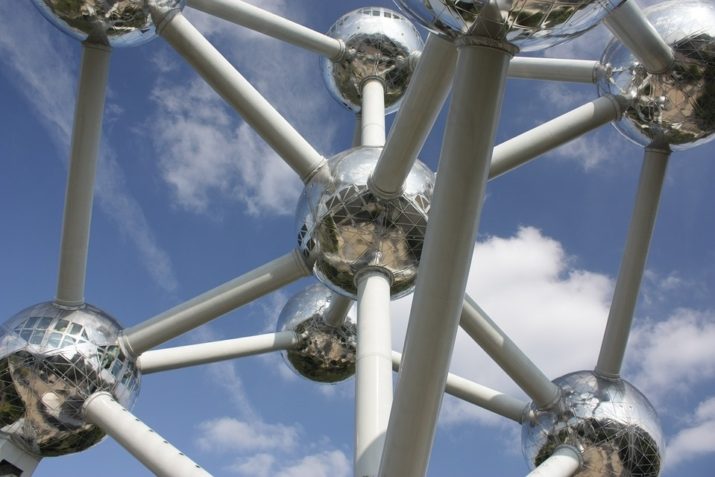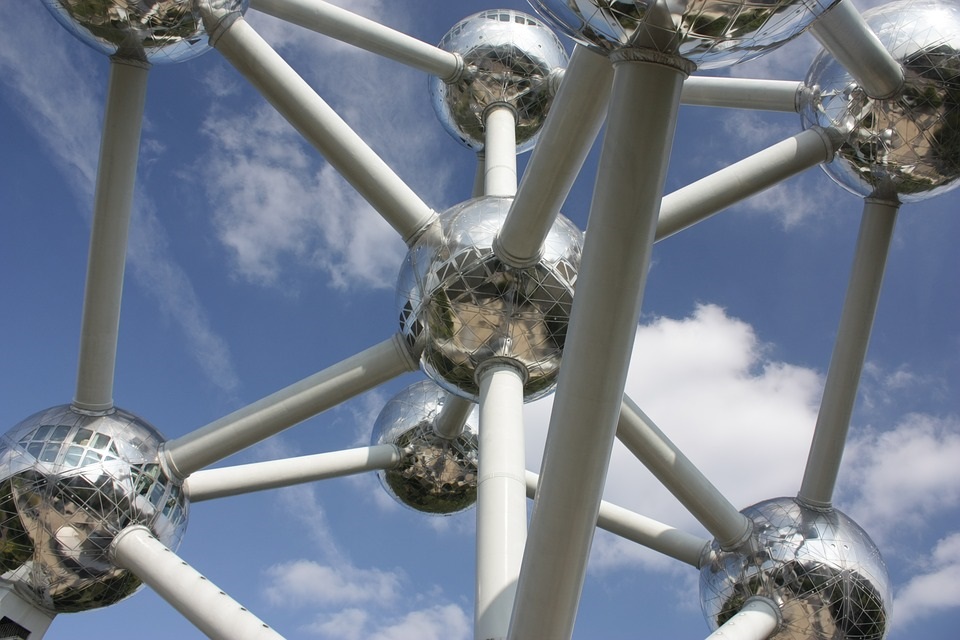
A Geographical Perspective on the European Research Area: Brussels as the European Research Capital

This is part of our feature Transformation of Higher Education and Research in Europe.
While knowledge is intangible, research and development (R&D) activities are known for being unevenly distributed across space. Since the 1980s, cross-national knowledge flows have dramatically increased, and the EU has played a major role in this field with policies such as the Framework Programmes (FP). In this perspective, the “European Research Area” (ERA) was proposed as a framework to support transnational R&D projects and to enhance mobility of students and scholars. Although the ERA is without geographical scope, these policies have different territorial impacts. For this purpose, we aim to propose a geographical perspective of the ERA with a specific focus on Brussels as the “European research capital.”
Since the 1990s, international knowledge flows have grown dramatically in terms of scientific co-authorship, co-patenting, citations and in all other scientific indicators available at the international level
Since the 1990s, international knowledge flows have grown dramatically in terms of scientific co-authorship, co-patenting, citations and in all other scientific indicators available at the international level (Leydesdorff and Wagner 2008). Similarly, mobility of scholars and students has also increased significantly, and the Erasmus program probably is the most successful (and famous) EU scheme. To support this trend, the EU has played a fundamental role, providing funding, incentives, policy goals, institutional coordination, and legal framework to overcome national boundaries. In the case of R&D policy, the FP is by far the most important scheme, boosting scientific and technological cooperation across Europe, while other policies acting in different fields, like the Erasmus or the ERC grants, make the EU intervention highly relevant.
To provide a framework for these initiatives, the EU is working on the ERA to promote a common space for research activities across national borders. But the notion of ERA is not without problems. From a geographical perspective, the notion of “area” has unclear center, structure, and borders: the EU has associated thirteen more countries[1] that are not members of the Union. This creates some confusion for coordination between research and other policies as well as for decision-making purposes, whether politically sensitive decisions have to be taken (e.g. biotechnologies) or conflicts emerge (see recent issues of mobility with Switzerland). In the ERA, scientific and technological cooperation aims to go far beyond these borders, and it is potentially open to (almost) everybody in the world. However, EU incentives are structurally changing research in Europe, but without structural reforms and harmonization: career paths for researchers are based on national frameworks and legal statute, funding mechanisms for universities significantly vary across member states, and firms have different fiscal and financial incentives to carry out R&D activities. Furthermore, the EU has promoted mobility regardless location: knowledge, students, and researchers can potentially go everywhere, and the EU is explicitly providing incentives. However, these flows tend to concentrate towards the most advanced city-regions, with risk of brain drain in peripheral areas (Dotti et al. 2013).
The presence of important EU policy for R&D activities, and the increasing importance of supra-national knowledge flows require a geographical perspective. The efforts put up by the EU to promote R&D cooperation are remarkable, attracting the interest of many stakeholders, specifically in the case of the FP/Horizon 2020. However, these impacts are unevenly distributed across space (Barber and Scherngell 2013).
Brussels, the European Research Capital
In order to explore geographical dimension of the ERA, we start focusing on its center: Brussels. Our objective is to show that Brussels is the “European research capital” for three reasons: the political and administrative role of Brussels, a competitive local research system, and concentration of R&D stakeholders clustered there and shaping the ERA.
- Brussels is well known for being the de facto capital of the EU due to the location of almost all European institutions, namely the Commission with all DGs in charge of R&D policies, as well as the Council and the Parliament as co-decision makers.
- Second, Brussels has a competitive research system, despite fragmentation of local institutions. Even though the local research system has limited visibility due to large presence of political and administrative functions, Brussels is very competitive in attracting European projects, establishing R&D networks, and involving universities as well as governments and firms in a virtuous “triple helix.”
- Third, in Brussels there is a strong concentration of European scientific and industrial associations actively involved in shaping networks of FP participations.
In order to show this triple function of Brussels, we carried out an analysis on FP participation from FP5 (1999-2002) to FP7 (2007-2010) across NUTS3 regions in Europe for three selected themes that are fully comparable: environment, energy, and biotechnologies (KBBE). Clearly, the first function as location of the EU Commission does not need verification and is self-evident, while the other two are tested using an innovative database developed in the context of the GREATPI research project (Dotti et al. 2014).
As shown in Table 1, Brussels is one of the top performing regions in Europe in terms of FP participation. The result is even more relevant considering that all other competitors are stable or declining. Furthermore, the result is significant, considering the relatively small size of Brussels in comparison to bigger regions such as Paris or London, and in line with similar metropolitan areas such as München and Copenhagen. Finally, these results do not suffer disciplinary bias, since all the main European metropolitan regions are represented with the only exception of Veluwe, where the Wageningen University is highly specialized in biotechnologies (KBBE).
In Figure 1, we compare the rate of FP participation, distinguishing between local actors (i.e. universities, firms, and governments of Belgium) versus European ones. Both categories show positive and growing performance. Even excluding European actors, Brussels would be among the top10 performing regions. More in-depth analyses are ongoing, and for the time being, our findings further reinforce the role of Brussels as the European research capital.
The category of European actors requires more discussion because it includes the EU-JRCs that have their legal headquarter in Brussels, and European scientific and industrial associations that are part of the “eurobuzz.” In this group, we counted 66 associations, of which 30 are industrial associations, the rest being scientific associations, NGOs, environmental associations, and professional networks. All of these associations do not carry out R&D directly, but works coordinating applications and projects, providing information about calls and dissemination of FP results. Their location in Brussels is part of the “eurobuzz” shaping networks of FP participation as intermediaries.
| TOP-10 REGIONS IN TERMS OF FP-PARTICIPATION (FP-THEMES: ENERGY, Environment, KBBE) |
||||||
| # | Regions | FP5 | FP7 | %FP5 | %FP7 | %FP7-%FP5 |
| 1 | Paris | 1166 | 581 | 7.1% | 5.4% | -1.7% |
| 2 | Copenhagen | 386 | 208 | 2.4% | 1.9% | -0.4% |
| 3 | Madrid | 382 | 240 | 2.3% | 2.2% | -0.1% |
| 4 | Roma | 361 | 256 | 2.2% | 2.4% | 0.2% |
| 5 | Brussels | 357 | 364 | 2.2% | 3.4% | 1.2% |
| 6 | London | 330 | 205 | 2.0% | 1.9% | -0.1% |
| 7 | Athens | 318 | 171 | 1.9% | 1.6% | -0.4% |
| 8 | Helsinki | 313 | 157 | 1.9% | 1.5% | -0.5% |
| 9 | München | 262 | 188 | 1.6% | 1.7% | 0.1% |
| 10 | Veluwe (Wageningen) | 252 | 266 | 1.5% | 2.5% | 0.9% |
| TOTAL | 16359 | 10769 | ||||
Table 1. Top-performing regions

Figure 1. Performance of Brussels by type of actors
Based on the recognition that R&D activities are unevenly distributed across space, and that the EU is playing a major role promoting transnational research policy, our analysis argued for the importance of a geographical perspective on the ERA. For this purpose, the role of Brussels as European research area was described across three functions: the location of the EU Commission, a competitive research system, and a spatial concentration of European associations involved in FP projects.
This contribution aims to animate the debate on the geographical dimensions of the ERA and related policies. While Brussels is the European research capital, more research is needed to understand structure and evolution of the European research geography, the impact of policies other than the FP, and the role played by different actors.
Nicola Francesco Dotti works at ISPOLE, Université Catholique de Louvain.
André Spithoven works at the Belgian Science Policy Office and at the Vrije Universiteit Brussel.
Photo: Atomium, Brussels | Pexels | Pixabay
References
Barber M J, Scherngell T. “Is the European R&D Network Homogeneous? Distinguishing Relevant Network Communities Using Graph Theoretic and Spatial Interaction Modelling Approaches” Regional Studies 47(8) 1283–1298. (2013).
Dotti N F, Fratesi U, Lenzi C, Percoco M, 2013, “Local Labour Markets and the Interregional Mobility of Italian University Students” Spatial Economic Analysis 8(4) 443–468.
Dotti N F, Spithoven A, van Heur B. “The competitiveness of Brussels in European Research Area” Brussels Studies. (2014).
Leydesdorff L, Wagner C S. “International Collaboration in Science and the Formation of a Core Group” Journal of Infometrics 2(4) 317–325. (2008).
“Geography of Research in Europe and Territorial Policy Innovations.” Geography of Research in Europe and Territorial Policy Innovations. Accessed July 19, 2016. http://www.greatpi.eu/.
Published on December 1, 2016.




